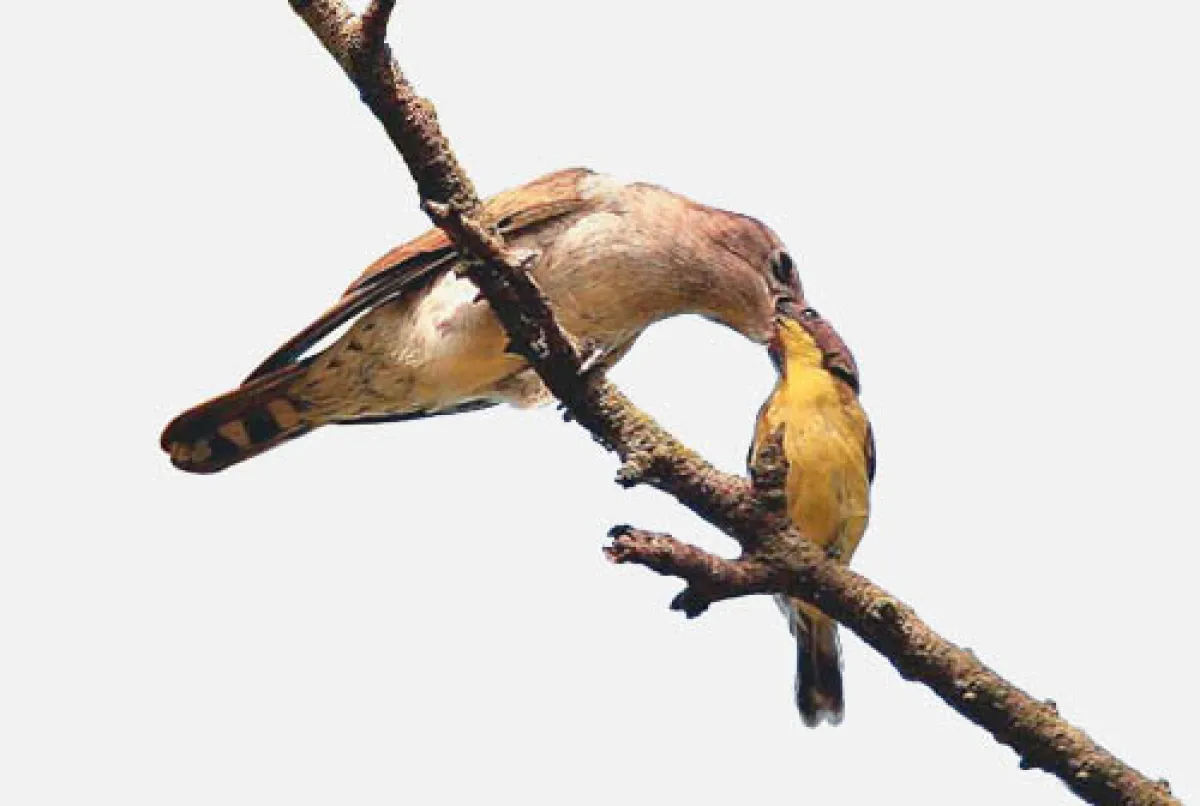The parental arms race

Loud cries, late nights and early morning feeds. Being a parent is sometimes hard work and you could be forgiven for occasionally wishing that someone else could raise your baby. That’s not a possibility for most of us, but a new study has found that three species of Australian cuckoo birds have reached this goal, evolving to have their offspring look like a member of their enforced adoptive families.
Famed for their parasitic ways, cuckoos the world over lay their eggs in the nests of other birds, hoping that the odd extra egg in the nest will go unnoticed by the host parent. Cuckoos have developed two tricks to prevent the host from noticing the foreign egg. Some cuckoo species lay a ‘mimetic’ egg, which matches that of their hosts, and other species lay a ‘cryptic’ egg, which matches the nest lining and is difficult to detect inside a dark nest.
But in a parental arms race the unwilling hosts are fighting back. Unable to identify the cuckoos’ eggs from their own, their primary line of resistance is to kill the cuckoos once hatched. That is, if the newly hatched cuckoo hasn’t beaten them to the blood bath.
To avoid being recognised as alien young, cuckoo nestlings physically evict all host offspring, both hatched and unhatched, from the nest. This guarantees they are the only hungry mouths to feed, therefore ensuring maximum chance of survival. According to Dr Naomi Langmore, lead author of the study, Australian cuckoos have taken this innovative approach to parenting a step further. Not only do they lay mimetic or cryptic eggs, but they have also evolved chicks that match the colour of the host young.
The researchers from the Research School of Biology, ANU College of Medicine, Biology and Environment, focused on three species of Australian cuckoos: Horsfield’s, shining and little bronze-cuckoos.
Their study found that these birds have evolved chicks that mimic the skin colour, mouth colour and down of the host young to avoid eviction from the nest. “Host parents will kill a parasite hatchling within the first few days of its life. But by matching the colour of the host young, the cuckoos are accepted by their ‘parents’,” says Langmore.
Each of the three species of cuckoo has its own choice of host bird. In turn, they have each evolved to lay different coloured young. The scope of colours is diverse, with young cuckoos hatching with skin colours ranging from black to yellow to pink.
“The mimicry only lasts for eight days, which is long enough for the acceptance to occur. After that, the pin feathers appear on the body and the young cuckoos begin to look like their own species,” says Langmore.
In just one week a complete stranger, of a different species, accepts another’s baby as their own, an impressive feat achieved by these three Australian species of cuckoo. Next task, how to find someone else to tackle those teenage years!
- Original article by Lucy Wedlock from the ANU Reporter Winter 2011, ANU. Photo of a Superb fairy-wren chick by Naomi Langmore.
